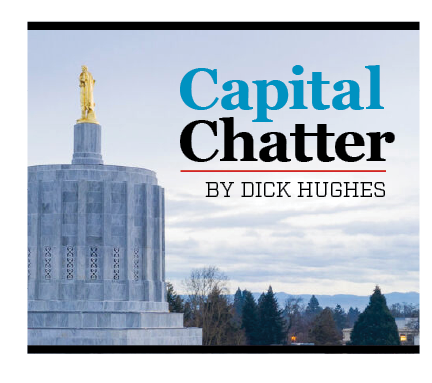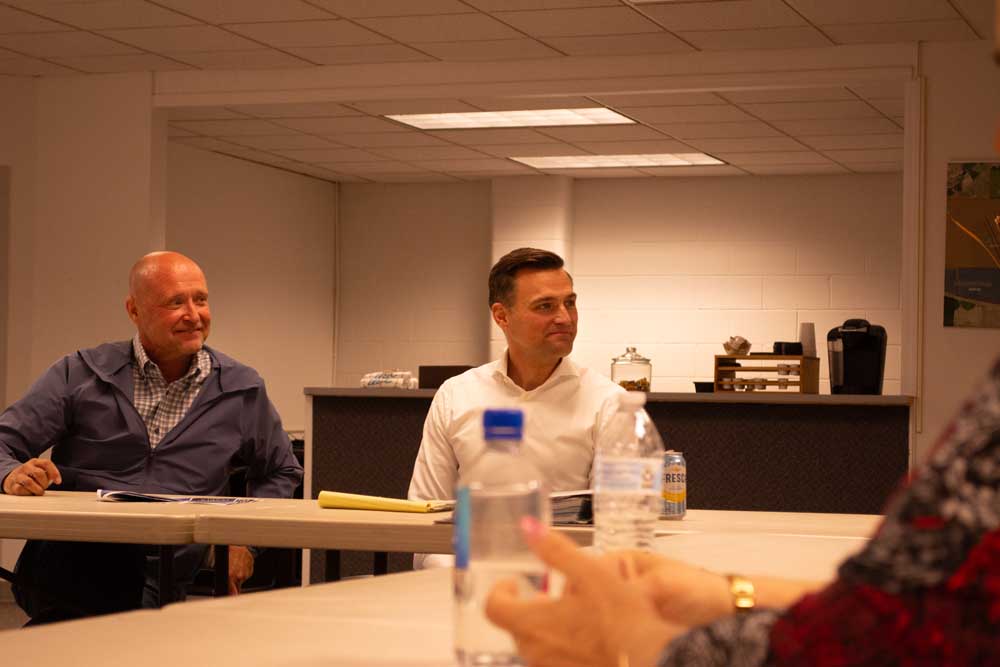Capital Chatter: Governing is the art of relationships
Published 5:00 pm Thursday, December 29, 2022

- capital chatter logo
When Gov.-elect Tina Kotek started her “One Oregon Listening Tour” in Yamhill County last week, local residents weren’t invited.
Trending
They noticed.
They sounded off afterward on social media, in my email and elsewhere. A common theme: “Sure would’ve been nice to know that she was going to be here on her ‘Listening Tour.’ Apparently, she isn’t ready to hear from farmers and conservatives about what they care about.’”
They have a point. …
Trending
But that also is the conundrum challenging the governor-elect as well as the rest of us: how to partake in meaningful, give-and-take conversations across Oregon instead of griping and stereotyping.
Kotek was wise to start small. She held three round-table discussions in McMinnville with service providers. She said she would continue that approach in the 35 other counties, focusing on core issues for her administration: housing and homelessness, behavioral health and substance abuse treatment, and schools and early learning.
After last week’s good start, she must do more. Expand in-person gatherings to include other audiences, such as coffee shop sit-downs in Astoria and a huddle with Umatilla County commissioners in Pendleton.
In her post-election victory speech, Kotek declared: “I will work to bridge the divisions in our state. I’ll spend time in communities all over Oregon, working to fix problems and partner with Oregonians who want to find solutions.”
It was an impressive speech. The governor-elect said all the right things. But as I noted when speaking to the Association of Oregon Counties last month, it all will come down to her definition of “Oregonians who want to find solutions.”
In the Gov. Tina Kotek administration, will people with divergent views be treated as valued participants or will they be branded as obstructionists – that is, as folks who don’t really want to find solutions so no need to work with them. The latter happened to rural Oregonians and their representatives as the 2019 Legislature fought over House Bill 2020, the carbon cap and trade proposal. (The demise of such legislation ultimately caused Gov. Kate Brown to circumvent the Legislature and instead issue her executive orders on climate change.)
Some HB 2020 true believers cast rural opponents as rubes brainwashed by corporate interests and the fossil fuel industry and thus who could not grasp how the measure would bless rural Oregon. The bill’s opponents held their own equally dismissive views of proponents. I find such simplistic categorizations of fellow Oregonians galling – not to mention exceedingly inaccurate.
Oregonians want, need and deserve to be heard. But merely replaying political grievances, whether on a 2022-23 gubernatorial listening tour or in the 2023 Legislature, will accomplish nothing other than cementing the state’s fractures.
Our new governor must find ways to graciously sit with residents and elected officials, hear their concerns and seek their ideas about the future. It would be dangerous for her, her staff or anyone, including journalists (or pollsters), to presume they already know what people think.
Governing is the art of relationships – across the political, societal and geographic spectrums. Relationships require developing and nurturing and ongoing tending. Time spent with hundreds of county commissioners, mayors and city councilors will pay off, along with the goodwill generated if rank-and-file Oregonians find their governor listens, even if they don’t agree.
When Sen. Lee Beyer, D-Springfield, led the Oregon Public Utility Commission, he made it a point to visit each of our 90 legislators in their home district every two years. Those trips underscored the vastness of Oregon, as well as the similarities and dissimilarities. (I suspect the Legislature would be more collaborative and effective if all legislators did such visitations.)
I’ve also been impressed by how State Librarian Wendy Cornelisen has traveled around Oregon during her first year in the job, visiting even the most rural of libraries.
Let me end with two observations:
First, as would be the case for anyone elected in Oregon’s three-way race for governor, Kotek has a distance to travel in winning over Oregonians. She earned 47% of the statewide vote. But counting residents of all ages and using statistics from Portland State University’s Population Research Center, the votes mean was elected by a mere 21% of Oregonians.
Second, a theory of management and leadership – actually, I’d consider it a truism of life – is that about a third of people will believe in you no matter what, and a third will oppose you no matter what. The challenge is to keep the middle third on your side instead of defecting to join the bottom third. (Even if you quibble with the exact percentages, the point remains valid.)




